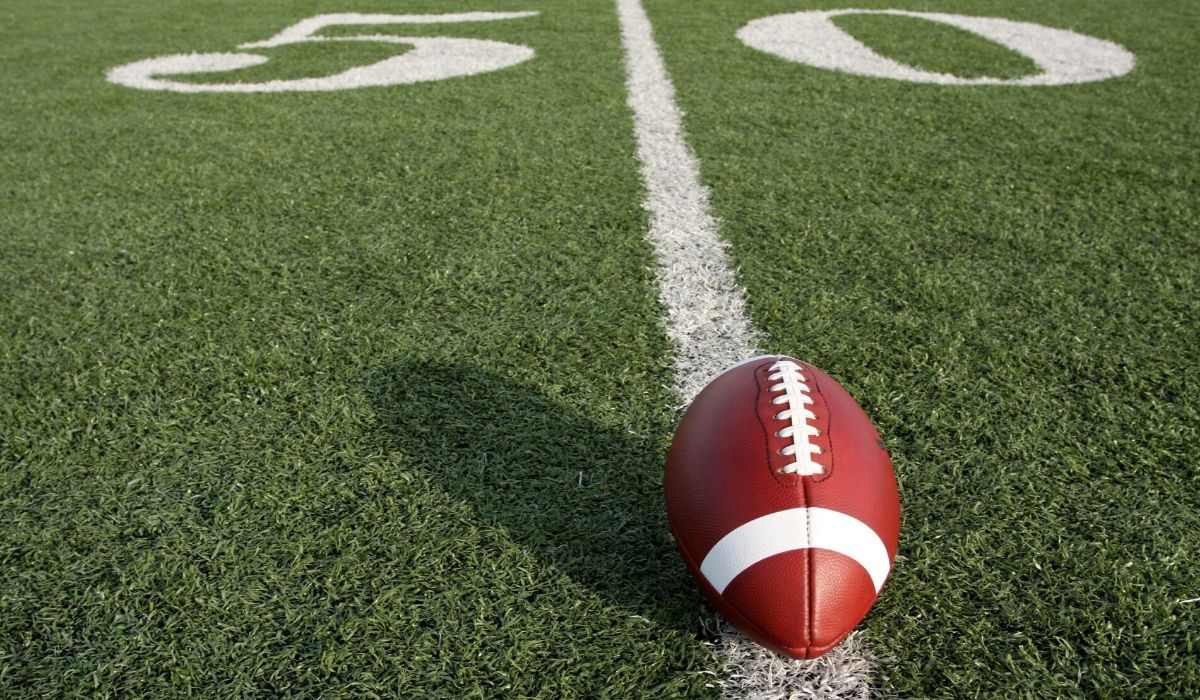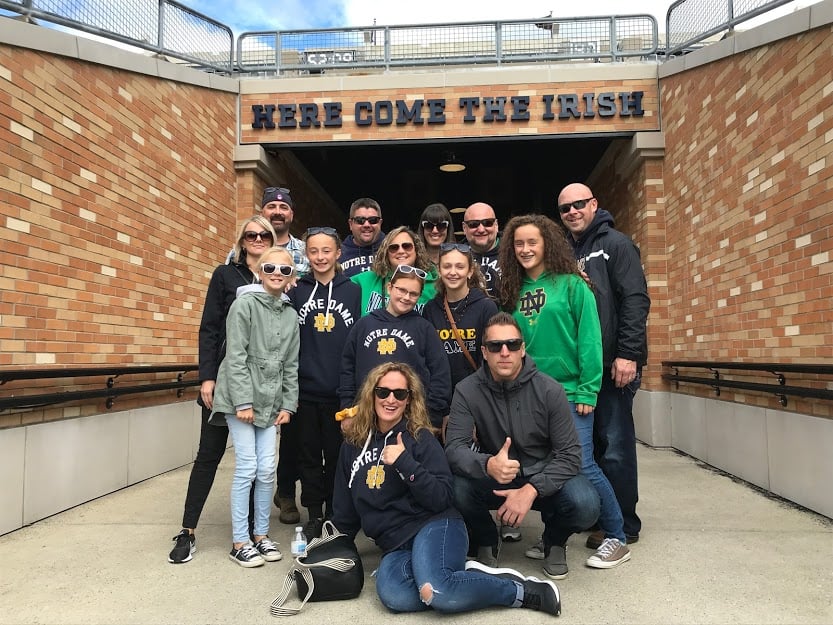May is usually all about the future in college football: speculating about the upcoming season, finalizing recruiting classes, and dreaming that in just a few short months… we’ll be getting ready to cheer on our favorite teams from the stands.
But for the time being, the gridiron’s immediate future isn’t quite clear; as COVID-19 has spread, it’s forced cancellations and postponements for events all across the country. And while college sports are far from the most important thing to be considering, as timelines on those events continue to move further out, questions are being asked about what college football will look like when (or if) it kicks off this fall.
Unsurprisingly, for as many questions as there are about how college football will be played, the answers - even from the most informed circles of the sport - seem just as numerous.
Here are a few different scenarios that we’ve got our eye on…
Scenario 1: College football kicks off at different times
As of this writing (and just a disclaimer, things are changing a lot), a non-unified start to the season has increasingly gained traction as a real option that the country’s 130 college football programs may pursue.
This push has come primarily from the SEC, where more states are moving towards re-openings over the next few months, presumably in time for fall camps to begin this summer. This is key, because one of the few things virtually everyone involved with college football has agreed upon is that athletes will need an appropriate amount of time to get themselves right in terms of conditioning, so that the game can be played safely.
That creates a few problems for west coast teams, where many measures to prevent the spread of COVID-19 will likely be extended much deeper into the summer. On Tuesday, a Los Angeles health official told the Los Angeles Times that stay-at-home orders there could extend three more months - meaning that programs like UCLA and USC wouldn’t even begin to start thinking about fall practices until August. To make matters even more complicated, Oregon governor Kate Brown said last week that sporting events should be modified or cancelled all the way through September.
For much of the last few months, the idea of a staggered start to the college football season seemed implausible. But that hard line seems to have blurred a bit in the last few weeks, beginning with Mark Emmert stating that the NCAA wouldn’t mandate a uniform return for sports. Decisions for each conference and program would fall to federal, state, and local officials, not the NCAA, and, according to Emmert, it's "unlikely everyone is in the same situation.”
Penn State coach James Franklin, who had previously supported the idea of a uniform start to the season, further fanned the flames of the idea when he told ESPN:
"I can't imagine that right now we're all going to open at the same time… If the SEC, for example, opens up a month earlier than the Big Ten, and the Big Ten is able to open up and 12 of the 14 schools, if two schools can't open, I don't see a conference - any conference - penalizing 80% or 75% of the schools because 25% of them can't open."
Still, this is far from a certainty, and as this idea began to gain momentum, Pac-12 football coaches formally made their pitch to the NCAA for a uniform start date.
“I'm of the opinion it would be great if the NCAA made a blanket rule for the whole nation of when we would start, and I understand some states may be less hit by this than most. And I'm sure there's going to be some different opinions on this,” said Washington coach Jimmy Lake. “In my opinion, I believe the NCAA should step in and say, 'OK, here's the date when everybody can start.’”
Scenario 2: The season begins on time, but with fan limitations
This idea was something the NCAA was trying to avoid for a long time as, unsurprisingly, so much revenue is generated from the game day environment.
But with both Germany’s Bundesliga soccer league and the Korean Baseball Organization resuming in the past few weeks sans fans, the idea of playing in empty stadiums seems to be gaining momentum. Indeed, Notre Dame’s AD Jack Swarbrick went from opposing playing games without fans just last month, to now laying a reduced capacity solution on the table as a means of starting the season.
“We haven’t gotten to the question of how big that audience is, but we won’t be at capacity,” Swarbrick said last week, per Blue and Gold. “We’ll do something less than that and we’ll be very careful about maintaining social distance, how the facility works, how you enter it and exit it.”
Swarbrick’s solutions hedges a bit more towards ensuring that at least students are allowed on campus and in the stadium on game days (this morning, Notre Dame released a plan to reopen campuses on August 10), but the conversation has started to circulate about big ticket games being moved to areas where stay-at-home and social distancing measures are expected to be relaxed come the fall.
Oregon’s decision regarding large scale events undeniably puts the marquee match-up between Ohio State and Oregon on September 12 in a tough spot. And while the New York Times reported that neither Ohio State nor the Pac-12 are ready to comment on move the games, Pac-12 commissioner Larry Scott didn’t shoot down the possibility outright: “That’s not something we’ve discussed yet… But these are the kinds of questions we’ll have to consider. We’re going to have to stay flexible.”
Still, it’s the neutral site games that seem to present the most head-scratching scenarios - as empty stadiums in some larger arenas presents a tough situation for the teams involved.
Again, according to the New York Times, many of the programs rent the facilities directly from the owner, and so absorbing the loss in revenue on top of the rental fee makes the situation feel completely untenable. Rice rented the Houston Texans’ NRG Stadium for their game against Louisiana State at a reported $3.5 million dollars in rental fees all by themselves in order to take the lion’s share of the game day profits - a huge payday in any other year.
But without fans to buy tickets, parking, concessions, or luxury seats - teams in Rice’s position would likely need to move the games (if their rental contract allows it) to avoid taking massive losses.
Scenario 3: College football’s start is uniformly delayed
Of course, with everything changing so quickly, nothing is off the table - including a delayed start to the season. According to a survey by Stadium, as recently as last month 85 out of 130 ADs believed college football would be played, but with a delay of some kind, including 61% who said it would start in October or November, and 14% who believed it would start after the Christmas season. That line of thinking has cooled a bit with more and more officials seeming to be open to scenarios one and two listed above.
But, at the risk of repeating myself, things continue changing so frequently that, as Michigan coach Jim Harbaugh put it: “all options are being looked at.”
And of course, any limits to fans or even different programs starting at different times would mess with an economic model with some serious stakes to it. According to a USA Today study, the $4.1 billion of revenue made up by college football each year comes out to roughly $78 million for each school - 60% of most school’s athletic budgets. Though TV rights, conference payouts, and sponsorships earn their fair share of that, an unavoidable sum comes from game day profits that would be lost if fans weren’t in attendance.
And let’s not forget the competitive balance that could be shifted if some conferences played and others couldn’t. With Pac-12 players looking for a place to play should their season not be allowed to kick off, other conferences could appeal for those players to come play the 2020 season with them - something Paul Finebaum likened it to “free agency” during an appearance on ESPN’s Get Up last week:
"[It would mean] free agency, and I think it's probably already going on."@finebaum on the possibility that the Pac12 will not have football this fall. pic.twitter.com/5u5hBQ5Mh4
— Get Up (@GetUpESPN) May 14, 2020
This kind of imbalance could permanently alter a conference that was already having trouble competing on the national level, having not sent a team to the College Football Playoff since the 2016-2017 season.
But… what if the college football season is cancelled?
Anything can happen and, of course, a mere three months ago no one could have ever imagined the entire sports world would grind to a halt.
But the cancellation of the college football season entirely doesn’t seem to be on the table, at least right now. The economic factors above (again… 60% of athletic department budgets) along with wider availability of testing in advance of the season, means that, at least right now, the powers that be in college football are far from throwing in the towel on football happening, somehow, some way.
Even the University of Washington’s Athletic Director Pat Chun out in the Pac-12, while expressing “pessimism” about an on-time kickoff for the Huskies, says he’s feeling “optimism that there will be a season.”
And there have been some signs in recent days that collegiate sports may be happening in the near future. The NCAA Division I Council voted Wednesday to allow athletic activities to resume beginning June 1, which would allow programs to resume, should their local and state governments deem it safe to do so.
Again, things could change - and all of these scenarios are subject to the safety advisories from health officials - but the way things look now - a full cancellation of the season doesn’t look like something being batted around.
So… when will we have a decision?
Unfortunately, college football fans will likely be in limbo for a little bit longer.
One of the reasons officials have been so cagey about the solutions surrounding the college football season is that they don’t have to make any firm decisions until around mid-June. That will be the deadline to start recalling players for July practices should the season end up starting on time.
“It’s still May. It’d be different if this was July 14, even June 14. But right now everything is speculative,” said Chun, a sentiment reiterated by Washington AD Jen Cohen in their joint interview with The Seattle Times.
“I feel like almost every idea you could possibly imagine has been floated,” Cohen said. “I think everything is going to be on the table.”
At Rent Like A Champion, we're monitoring the spread of COVID-19, and are stepping up our game to ensure that whenever you're ready to travel again, we're able to provide you with a safe, clean, and comfortable game day experience.
Read more about our new coronavirus health and safety standards now.




.jpg)
.jpg)
